Introduction to Interior Concrete Wall Finishes
When it comes to modern design, interior concrete wall finishes are gaining popularity due to their sleek, industrial aesthetic. One material that stands out is microcement. It provides a smooth, seamless finish that enhances the look of any room, making it a top choice for those who want a modern, minimalist vibe. Whether you’re transforming a living room, kitchen, or bathroom, microcement can turn your space into a stylish, durable, and functional environment.
Microcement’s ability to adhere to a variety of surfaces, including drywall, tiles, and wood, makes it an ideal solution for many interior design challenges. Its versatile nature has made it a sought-after material for homeowners, designers, and architects alike.
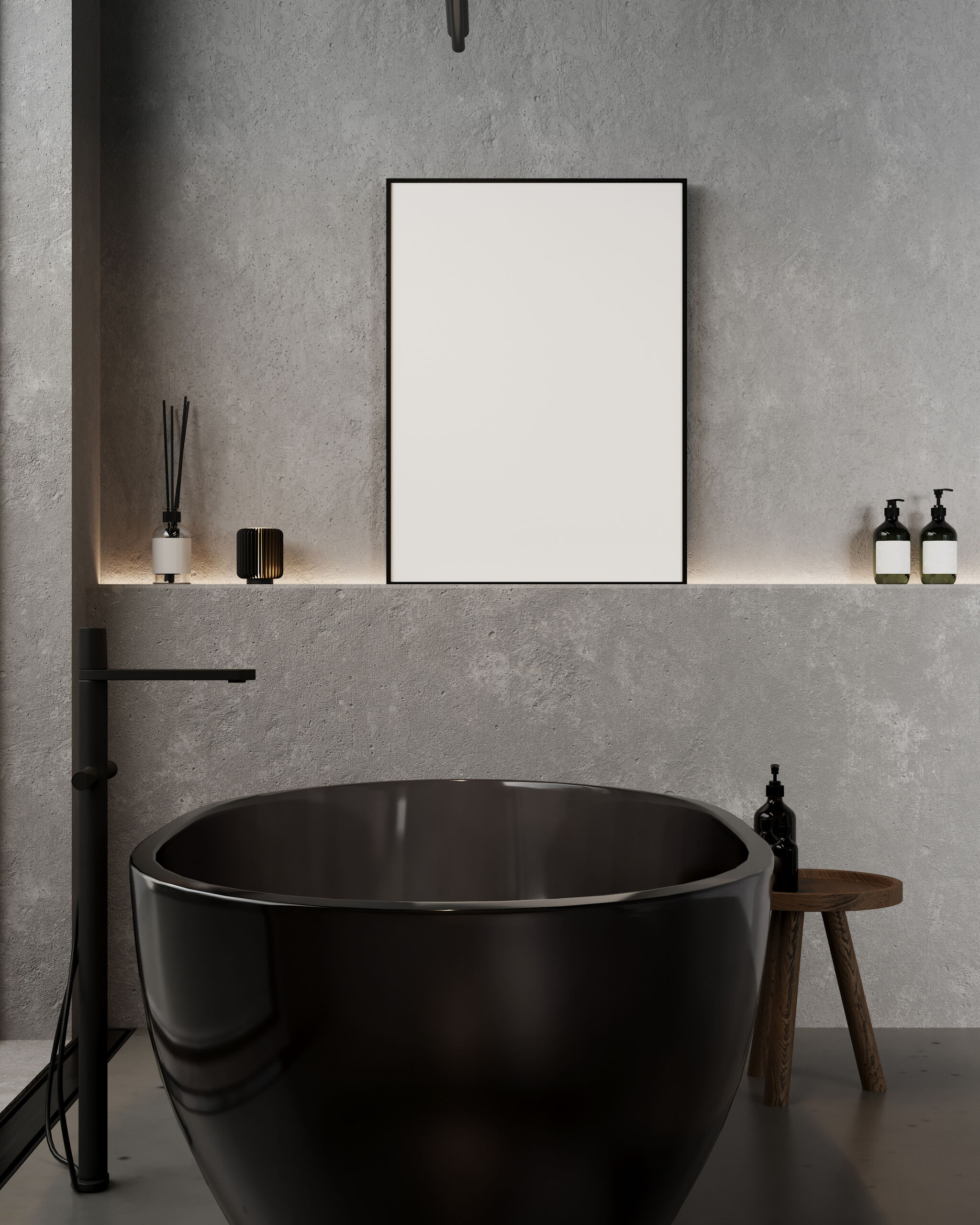
Different Types of Concrete Finishes for Interiors
Before diving into the benefits of microcement, it’s essential to understand the different types of concrete finishes available for interiors. Concrete can be finished in several ways, each offering a unique texture and appearance:
- Polished Concrete: This finish creates a smooth, reflective surface that is often used in modern and industrial-style interiors. It’s ideal for floors but can be used on walls for a more dramatic effect.
- Exposed Aggregate: In this finish, the surface layer of the concrete is removed to expose the natural stones and aggregates within, creating a textured, rough appearance. This is a great option for those looking for a more rustic or industrial look.
- Stamped Concrete: Stamped concrete mimics the appearance of other materials such as brick, slate, or wood. It is achieved by pressing patterns into the concrete while it’s still wet.
- Microcement: Unlike other concrete finishes, microcement is applied in very thin layers (2-3 mm), making it ideal for decorative wall finishes. It provides a sleek, seamless look that works perfectly in contemporary interior spaces.
Each of these finishes has its place in interior design, but for a minimalist, modern aesthetic, microcement is often the go-to choice due to its ability to provide a smooth, consistent surface that complements various styles.
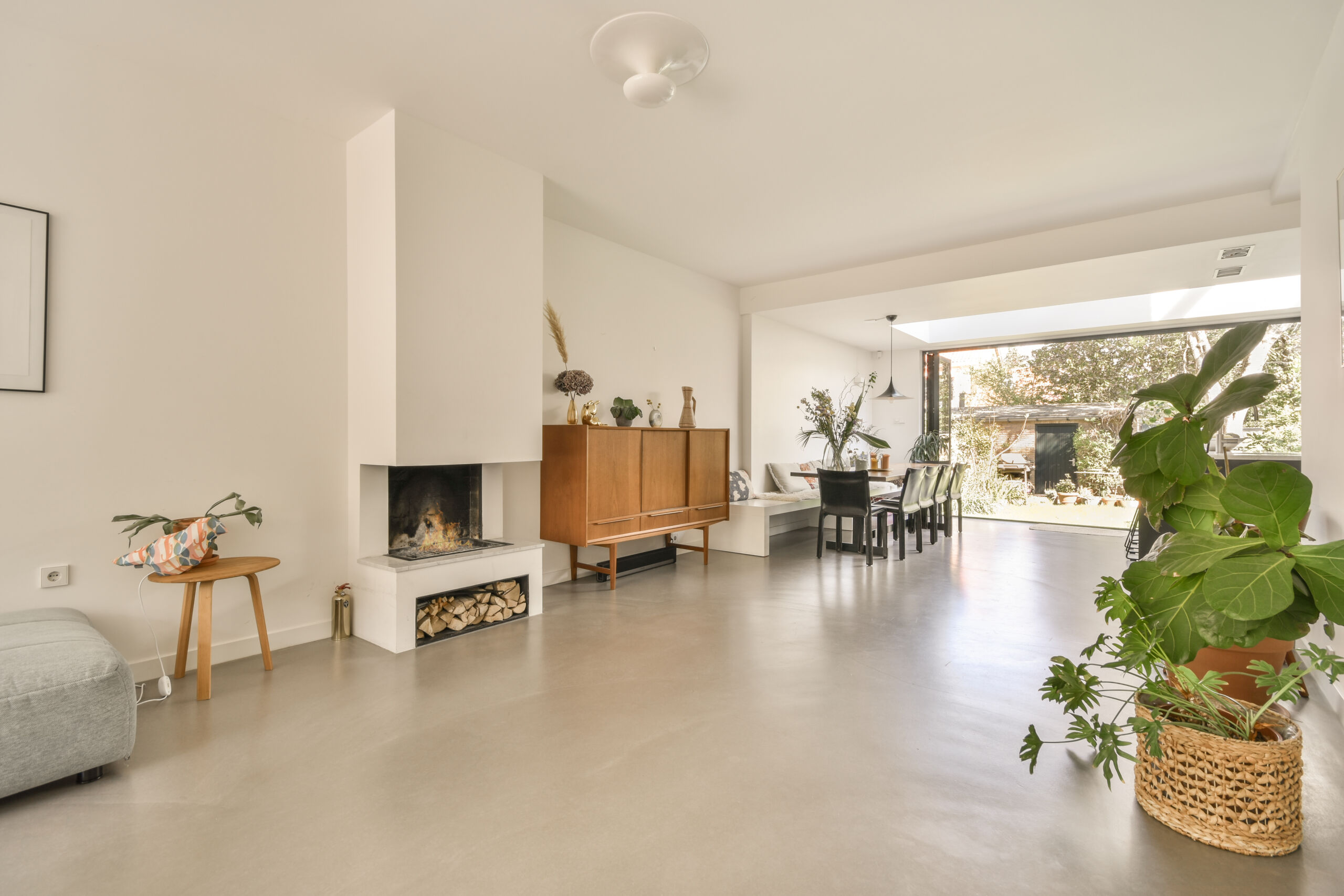
Speak To Shayan 416 (606) 8060 or Request A Quote
Microcement vs. Concrete: What’s the Difference?
Though microcement and traditional concrete are both used for wall finishes, they differ significantly in terms of application, appearance, and functionality.
- Thickness: Concrete is applied in thicker layers (often several centimeters), while microcement is a thin-coat finish (2-3 mm). This makes microcement ideal for projects where you want to avoid adding significant weight or bulk to the walls.
- Application Process: Concrete requires reinforcement, and curing can take time. In contrast, microcement is faster and easier to apply, often going directly over existing surfaces like drywall, tile, or even wood. This makes microcement a more practical choice for renovations and interior projects.
- Aesthetic: Traditional concrete gives a rough, industrial look that may require additional finishing to make it suitable for interiors. Microcement, on the other hand, provides a smooth, polished look right out of the gate. Its seamless surface makes it an excellent option for modern, minimalist spaces.
- Flexibility: Microcement can be applied not only to walls but also to floors, countertops, and even furniture, providing unmatched versatility in interior design.
For those looking for a stylish, sleek finish without the bulk and roughness of traditional concrete, microcement is the superior choice.
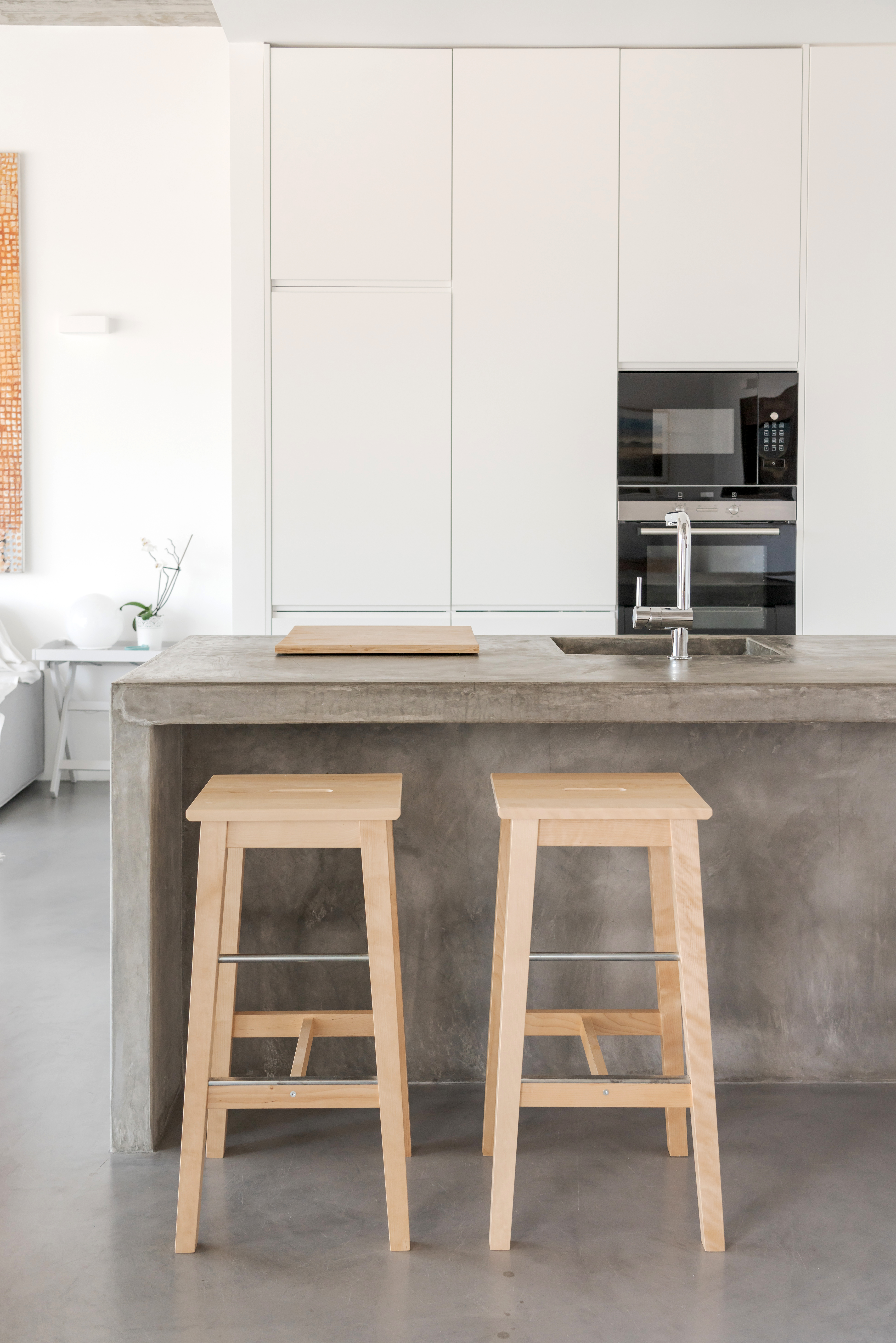
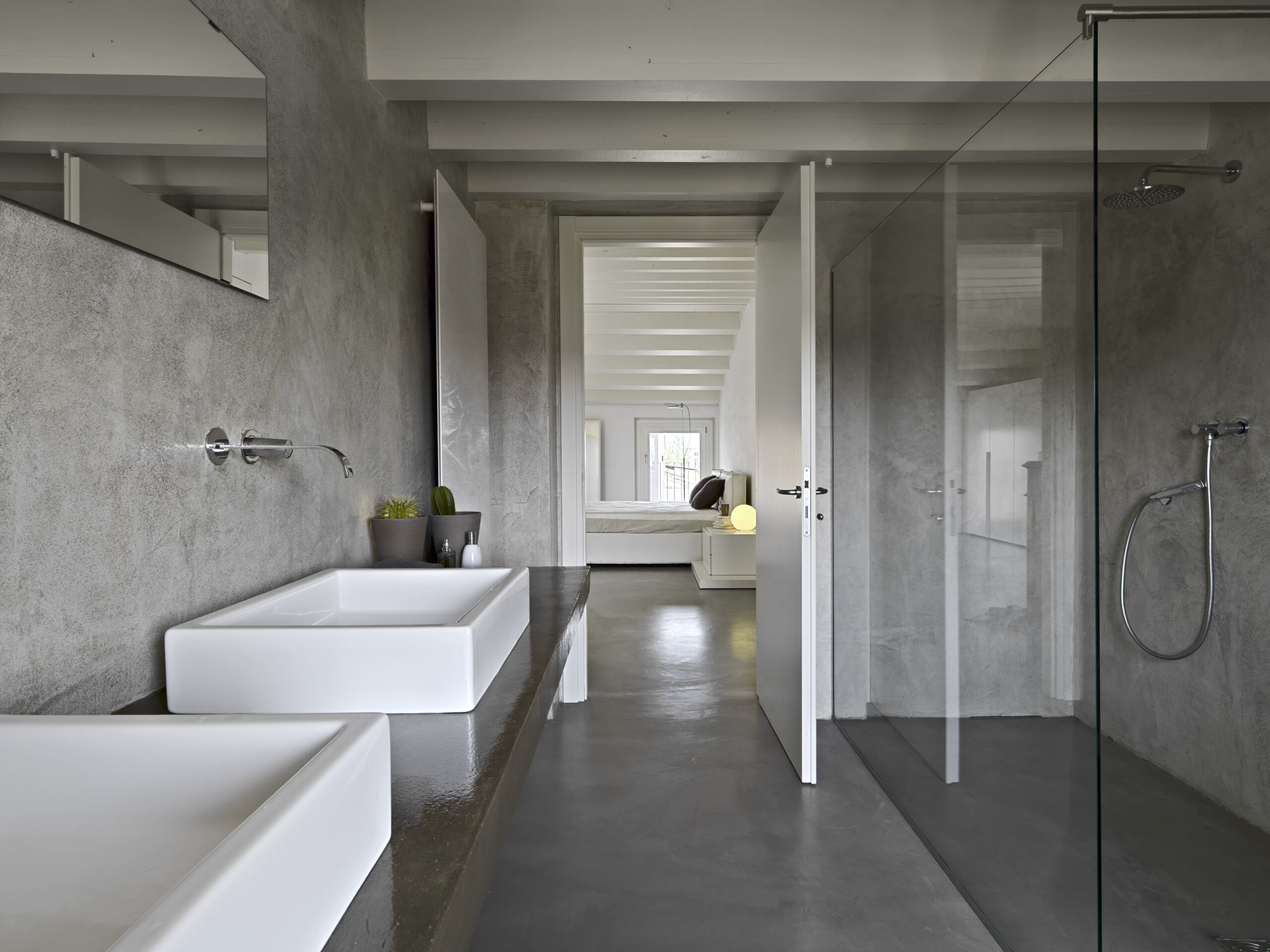
Microcement vs. Venetian Plaster: Which is Better for Interior Walls?
When choosing between microcement and Venetian plaster for your interior concrete wall finishes, the decision depends on the style and finish you want to achieve.
- Microcement: This finish is known for its seamless, concrete-like appearance. It’s perfect for contemporary interiors where smooth, sleek surfaces are desired. Additionally, microcement is highly durable, water-resistant, and easy to maintain, making it a great choice for high-traffic areas like hallways, living rooms, and kitchens. It’s also ideal for wet zones such as bathrooms and showers due to its waterproof properties.
- Venetian Plaster: On the other hand, Venetian plaster offers a more textured, luxurious finish that mimics natural stone or marble. It brings a level of sophistication to spaces like living rooms, dining areas, or even bedrooms. While it’s beautiful, Venetian plaster may require more maintenance and care over time.
Which one is better? If you’re after a minimalist, modern look with easy maintenance, microcement is likely the better option. However, if you prefer a more traditional or textured finish, Venetian plaster might be the way to go.
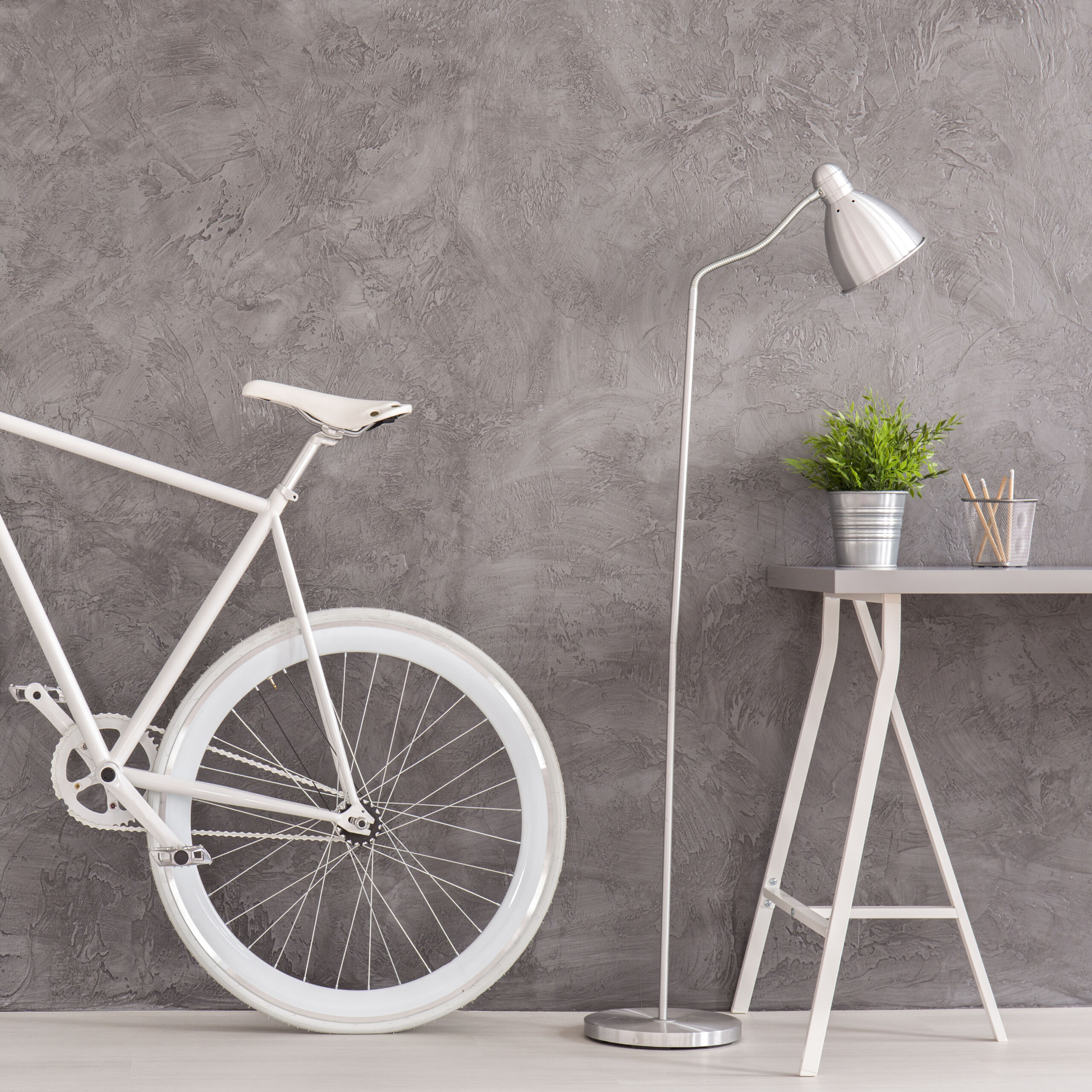
Why Microcement is the Best Interior Concrete Wall Finish
There are several reasons why microcement stands out as one of the best interior concrete wall finishes:
Seamless Look: Microcement offers a smooth, uninterrupted surface that creates a sleek, modern aesthetic. There are no joints or seams, making the finish look cleaner and more refined.
Durability: Microcement is highly resistant to wear and tear, making it ideal for both residential and commercial spaces. It can withstand heavy use and is also resistant to scratches and cracks.
Versatility: One of the key advantages of microcement is its versatility. It can be applied to walls, floors, countertops, and even furniture, allowing you to maintain a consistent look throughout your space.
Waterproof: Microcement is a fantastic option for bathrooms, kitchens, and other wet areas because it’s waterproof once sealed. This makes it perfect for showers, sinks, and other moisture-prone spaces.
Easy Maintenance: Microcement surfaces are easy to clean and maintain. With proper sealing, they resist stains and water damage, ensuring they stay looking great for years.
Customizable: Microcement can be customized to achieve different colors, textures, and finishes. Whether you want a matte, satin, or glossy finish, microcement offers a range of options to suit your design style.
Step-by-Step Guide to Microcement Application
Applying microcement requires skill and precision. Here’s a simplified step-by-step guide to the process:
Surface Preparation: The existing surface is cleaned, repaired, and prepped to ensure a smooth application. Any cracks or imperfections are fixed beforehand.
Priming: A primer is applied to improve adhesion between the surface and the microcement.
First Layer: A base coat of microcement is applied, typically using a trowel, to create the first layer. This layer may include mesh reinforcement to improve strength.
Second Layer: After the first layer dries, a second coat is applied to build the thickness and texture.
Sanding: Once the second layer dries, it’s sanded down to create a smooth surface.
Sealing: Finally, a sealant is applied to protect the surface from moisture, stains, and wear. This also enhances the finish, whether you’re going for matte, satin, or glossy.
Benefits of Using Microcement for Interior Concrete Wall Finishes
Microcement offers several advantages when used as an interior wall finish:
- Seamless Appearance: Its smooth, continuous surface gives interiors a sleek and modern aesthetic.
- Durability: Highly resistant to wear, microcement is ideal for both residential and commercial spaces.
- Versatility: It can be applied over various surfaces, including drywall, wood, and even tiles.
- Waterproof: Perfect for bathrooms and kitchens, where water exposure is common.
- Customizable: Microcement can be tinted in a variety of colors and finishes, from matte to glossy, to suit any design style.
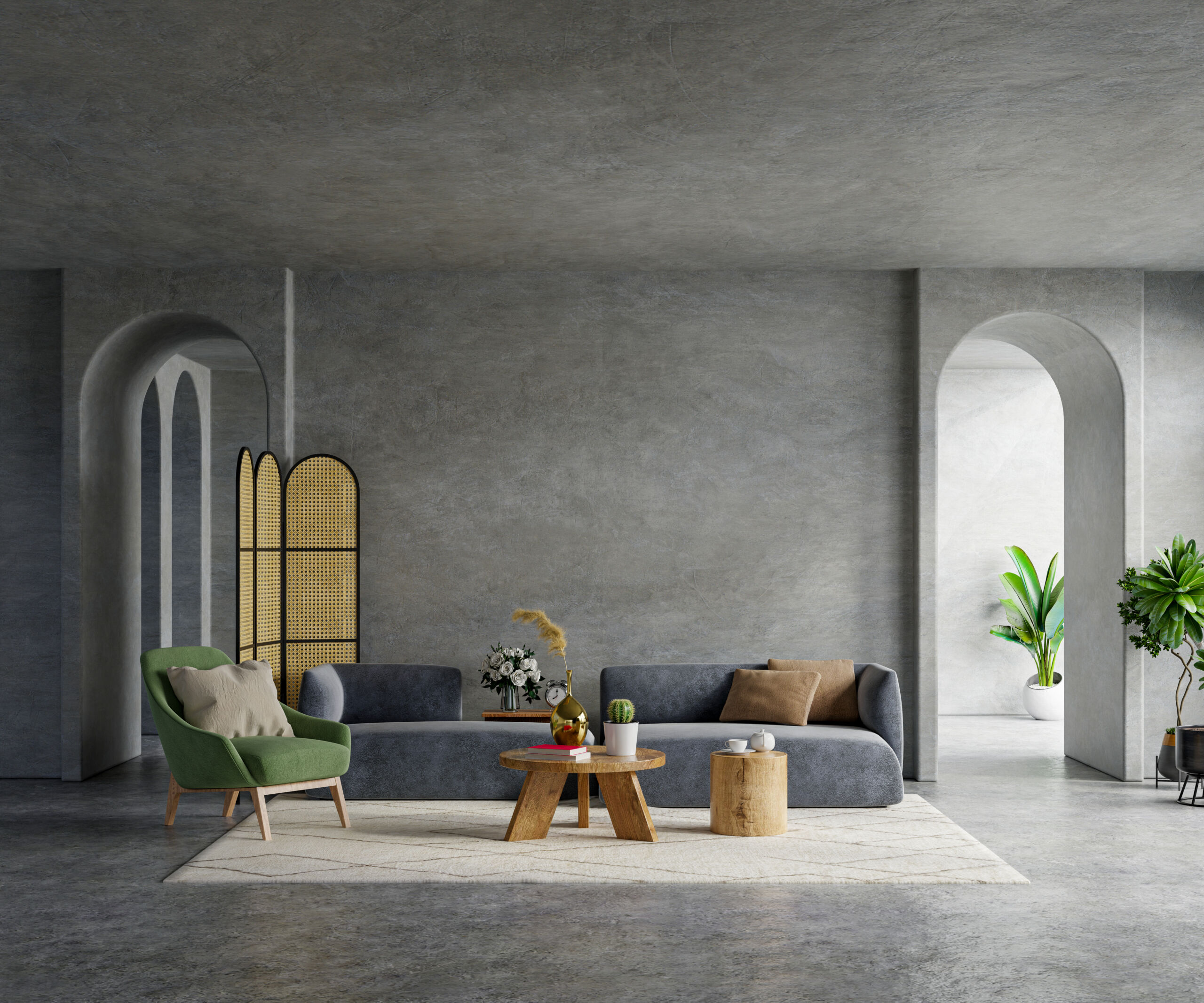
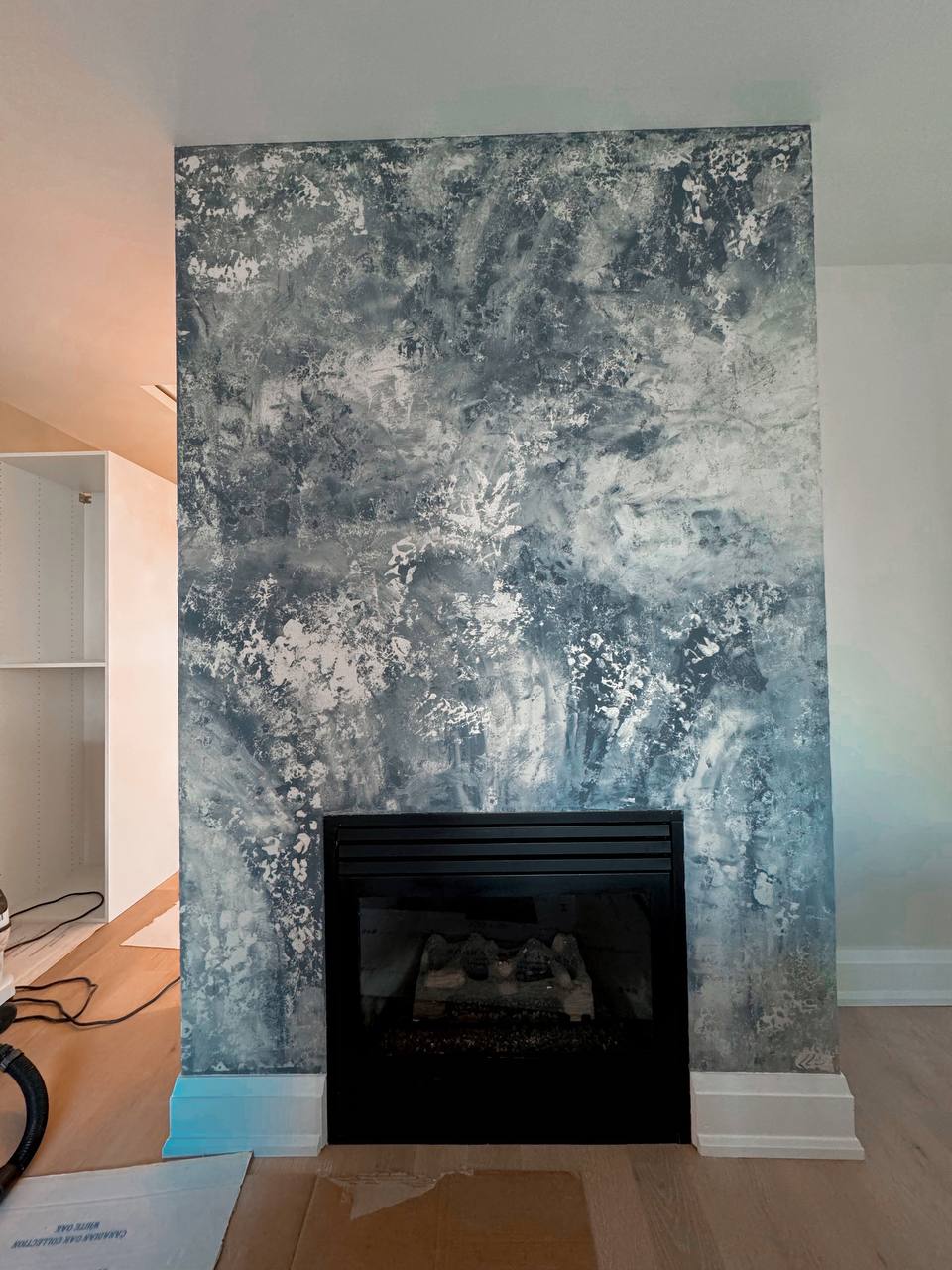
Why Microcement is the Perfect Interior Concrete Wall Finish
For anyone seeking the perfect interior concrete wall finish, microcement offers the ideal combination of style, durability, and flexibility. Its ability to transform any surface into a sleek, modern design makes it a top choice for homeowners and designers alike. Whether you’re creating an industrial vibe or a contemporary minimalist look, microcement can bring your vision to life with its seamless and versatile finish.
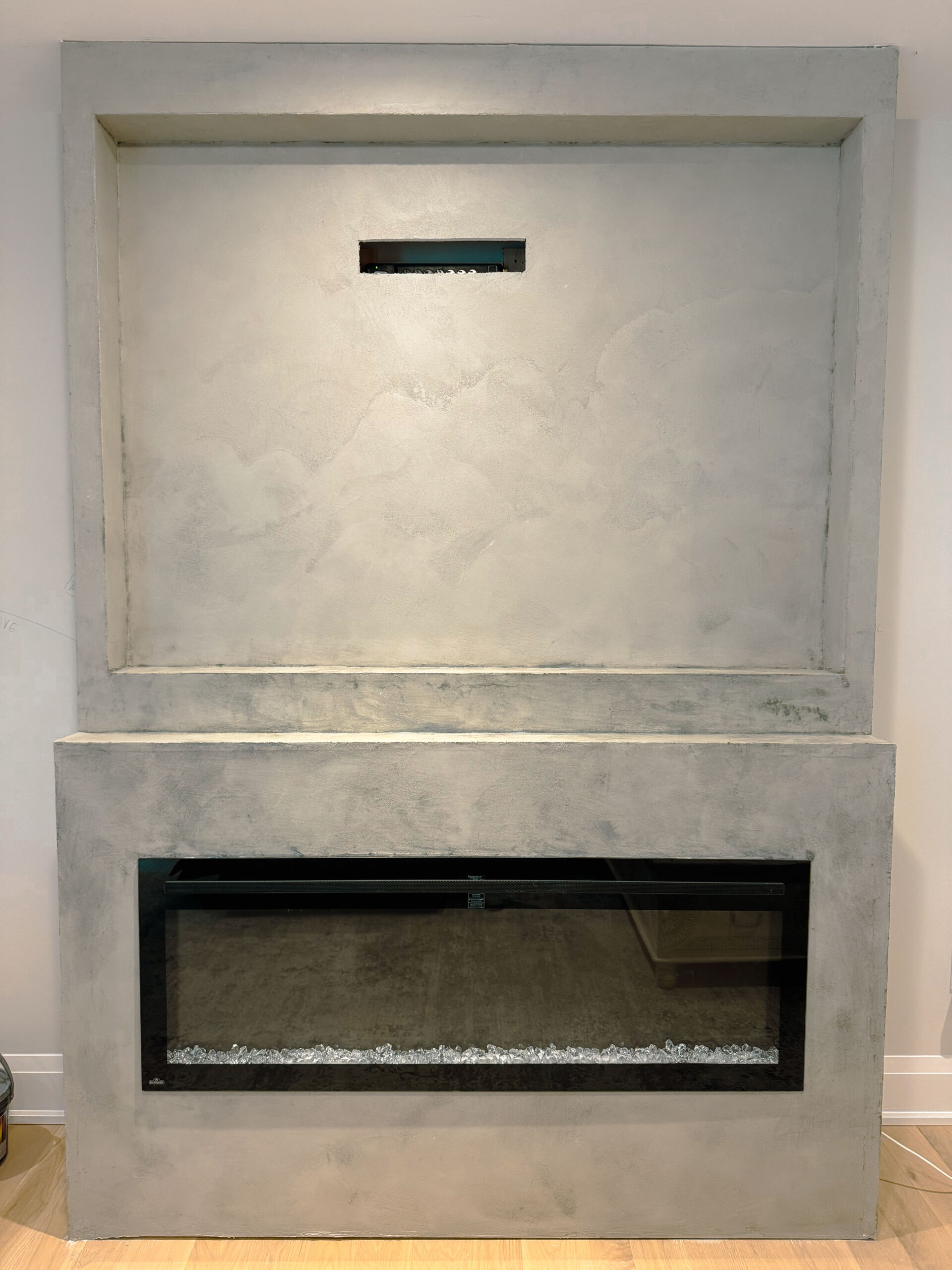
Ready to Transform Your Interiors with Microcement?
If you’re looking to achieve a modern, seamless, and durable finish for your interior walls, microcement is the perfect choice. Whether it’s for a sleek living room, a contemporary bathroom, or a stylish kitchen, this versatile material can elevate the look and feel of any space.
Contact us today to discuss how we can bring your design vision to life with our expert microcement application services. Let’s create stunning, low-maintenance interiors that combine beauty with lasting durability!

